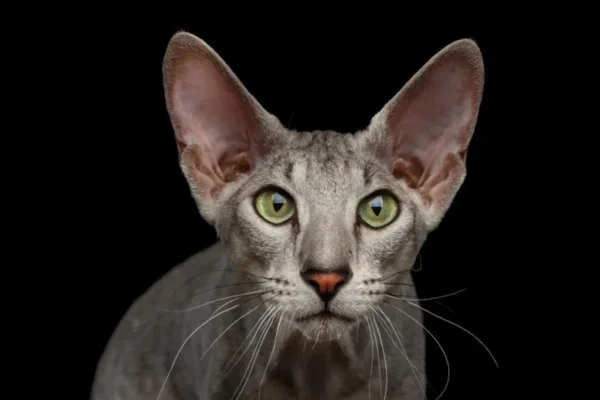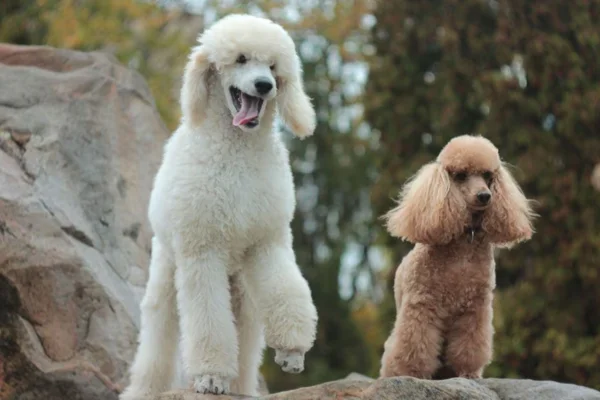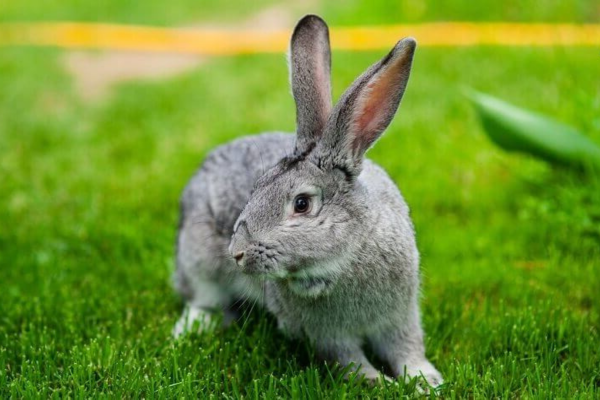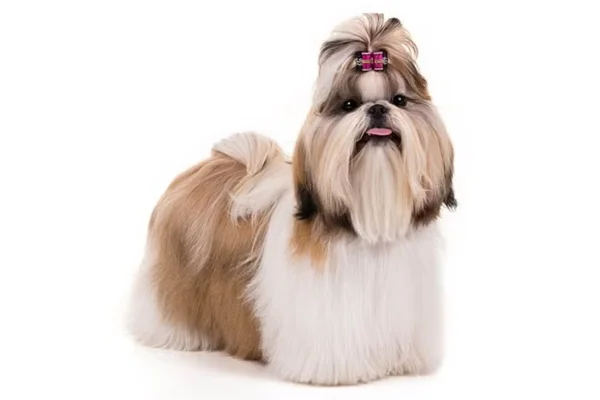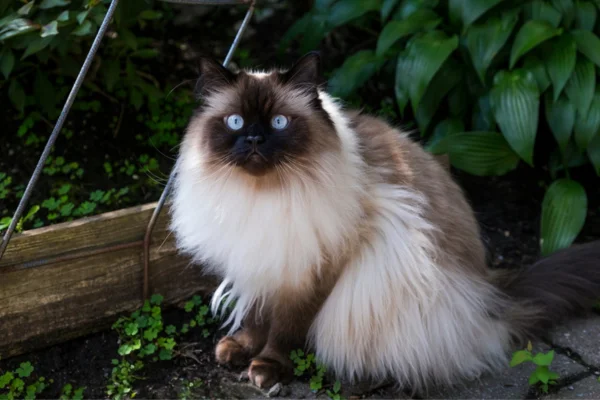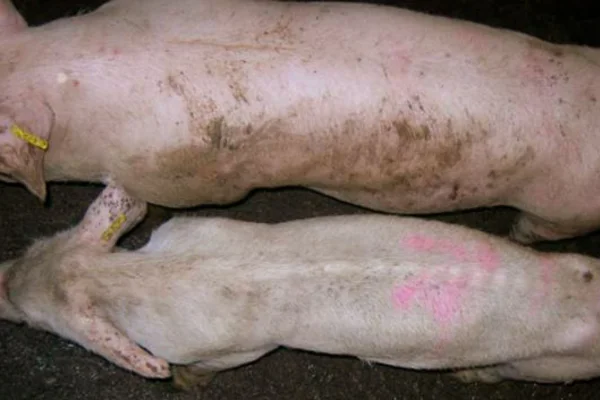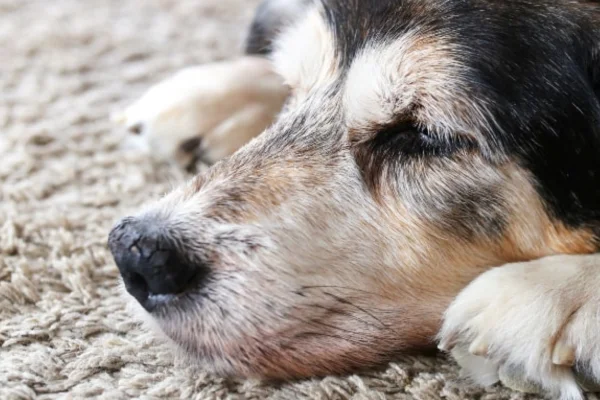Meet the Fascinating Peterbald Cat: Unique Beauty and Personality
The feline world is full of charming breeds, each with its own distinctive characteristics. Among these, the Peterbald cat stands out for its exotic appearance and captivating personality. Originally from Russia, the Peterbald is a relatively new breed, but one that has already won many admirers around the world. In this article, we'll explore the origins, characteristics, care and curiosities of this fascinating breed.
Origin and History of the Peterbald Cat
The Peterbald cat originated in St. Petersburg, Russia, in 1994. The breed emerged from a cross between a Donskoy (or Don Sphynx) and a short-haired Oriental. Russian breeder Olga S. Mironova was responsible for this genetic experiment, which resulted in a cat breed with unique characteristics.
The first specimens of the breed had a variety of coats, from completely hairless to those with a very fine layer of fur. Over time, and through selective cross-breeding, breeders have managed to stabilize the breed's appearance, while maintaining the elegance and grace that are hallmarks of Peterbald cats.
Contents
Physical characteristics
The Peterbald is a medium-sized cat with a slender, muscular body. Its main characteristics include:
- Head and Face: The head is triangular, with large, pointed ears. The eyes are almond-shaped and can be different colors, with blue being one of the most common.
- Coat: The coat of the Peterbald cat can vary. There are completely hairless specimens, known as "hairless", while others have a very thin and short coat, called "velour". There are also those with a denser coat, although still short, known as "brush".
- Skin: The skin of hairless cats is soft and warm to the touch, resembling the texture of suede. These cats may have some wrinkles, especially around the head and neck.
- Body and tail: The body is elongated, with long, thin legs. The tail is long and tapered, complementing the cat's elegant appearance.
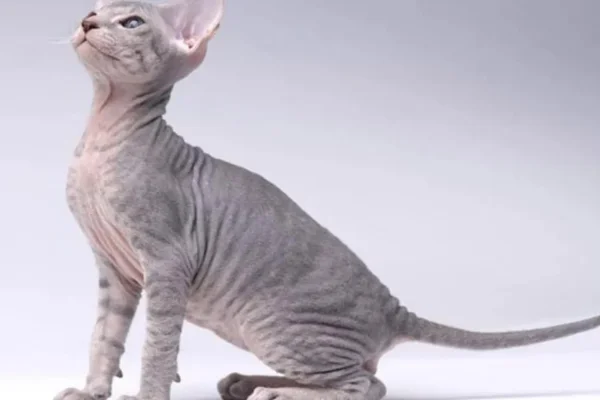
Personality and Behavior
The Peterbald cat is not only beautiful; it is also known for its charming personality. These cats are extremely affectionate and love human company. Some of the most striking behavioral characteristics include:
- Sociability: They are very sociable and get on well with other pets, including dogs. They are also great with children, making them an excellent choice for families.
- Intelligence: Peterbalds are intelligent and curious cats. They love to explore their surroundings and learn new tricks. They are easily trainable and respond well to positive reinforcement.
- Affectivity: They are extremely affectionate cats and love to be close to their owners. It's not uncommon for them to follow their humans around the house, seeking attention and affection.
- Activity: Although they are quiet, they also like to play. Investing in interactive toys can be a great way to keep them entertained and mentally stimulated.
Suitable food for the Peterbald cat
Food is one of the most important aspects of ensuring the health and well-being of your Peterbald cat. Like all cats, they need a balanced diet rich in proteins, which are essential for muscle development and maintaining general health. Here are some tips for proper nutrition:
- High-quality feed: Opt for premium or super premium feed that contains a high percentage of animal protein. Avoid feed with a lot of artificial ingredients, colorings or preservatives.
- Natural Food: Some owners prefer to offer a natural food diet (or BARF), which includes raw meat, bones and vegetables. If you opt for this diet, it is crucial that it is balanced and supplemented correctly to avoid nutritional deficiencies.
- Hydration: Make sure your Peterbald has constant access to fresh water. Some cats prefer running water, so a cat fountain can be a good option to encourage them to drink more.
- Wet food: Incorporating wet food, such as pâtés and sachets, can help with hydration and provide variety in the diet. These foods are also a good option for cats who have difficulty chewing dry food.
- Supplements: Consult a vet about the need for vitamin or mineral supplements, especially if your cat is on a specific diet or has special nutritional needs.
Ideal Environment for the Peterbald Cat
The environment in which the Peterbald cat lives is also fundamental to its well-being. Due to their sensitivity to the cold and their need for mental stimulation, some considerations must be made:
- Temperature: As mentioned earlier, Peterbalds are more sensitive to the cold due to their lack of fur. Make sure your home is well heated, especially during the colder months. Heated beds and blankets can help keep your cat comfortable.
- Space to Explore: Cats are naturally curious and active. Provide an environment rich in stimuli, with scratching posts, climbing shelves and interactive toys. This helps keep your Peterbald physically active and mentally stimulated.
- Safe environment: Keep your Peterbald in a safe environment, away from chemicals, toxic plants and small objects that he can swallow. If you have a safe outdoor area, such as an enclosed yard or a screened-in porch, this can be a great space for him to explore under supervision.
- Social interaction: Peterbald is a very sociable cat and benefits from frequent interaction with his owners and other pets. Spending time playing with and stroking your cat is important for its emotional well-being.
- Hygiene and cleanliness: Due to their lack of hair, Peterbalds' skin can accumulate dirt and oils. In addition to regular bathing, maintaining a clean and dust-free environment can help prevent skin irritations.
- Hiding places and refuges: Cats like to have places where they can hide and feel safe. Provide boxes, enclosed beds or high shelves where your cat can retreat when it wants a quiet moment.
With these considerations, you'll be ensuring that your Peterbald lives a healthy, happy and comfortable life.
Special Care
Due to their lack of hair, Peterbald cats require specific care to keep them healthy and comfortable:
- Regular baths: Without the protection of a dense coat, Peterbalds' skin can accumulate oils more quickly. Regular bathing helps keep their skin clean and healthy.
- Protection from the sun: Direct exposure to the sun can cause burns to the sensitive skin of these cats. It's important to limit the amount of time they spend in the sun and consider using animal-specific sunscreens.
- Temperature: They are more sensitive to the cold due to their lack of fur. Ensuring that they have a warm and comfortable environment is essential, especially in colder climates.
- Ear hygiene: Peterbald's large ears can accumulate dirt and wax. Regular cleaning is necessary to avoid infection.
Health and longevity
Peterbald cats are generally healthy and don't have many predispositions to genetic diseases. However, it is always important to choose a responsible breeder who carries out health tests on their breeding cats.
The Peterbald's life expectancy varies between 12 and 15 years, depending on the care it receives and its lifestyle. Maintaining a balanced diet and providing regular veterinary care are key to ensuring a long and healthy life for your feline.
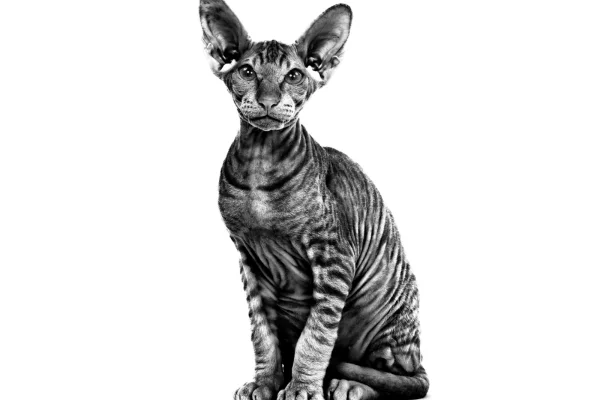
Curiosities about the Peterbald Cat
- Variety of coats: Although many associate the Peterbald with completely hairless cats, the breed has a variety of coats, which may surprise those who are used to the more familiar appearance.
- Hypoallergenic: Although they are not completely hypoallergenic, Peterbalds may be a better option for people who are allergic to cats, as they produce fewer allergens than long-haired breeds.
- Participation in exhibitions: Peterbalds are often seen at cat shows, where their exotic appearance and friendly behavior win over many judges and spectators.
- Skin Care: Lack of hair doesn't mean lack of care. Peterbalds' skin requires just as much attention as the coats of other breeds, especially when it comes to moisturizing and cleaning.
Conclusion
The Peterbald cat is a unique breed that combines an exotic appearance with an affectionate and sociable personality. Originally from Russia, it quickly became popular all over the world, winning hearts with its elegance and charm. If you're considering adding a Peterbald to your family, be prepared to give it the care and attention it deserves. With the right care, a Peterbald can be a loyal and loving companion for many years to come.
Adopting a Peterbald cat is more than just having a pet; it's welcoming a loving friend full of personality. If you're looking for a cat that stands out both for its appearance and behavior, Peterbald could be the perfect choice for you.

